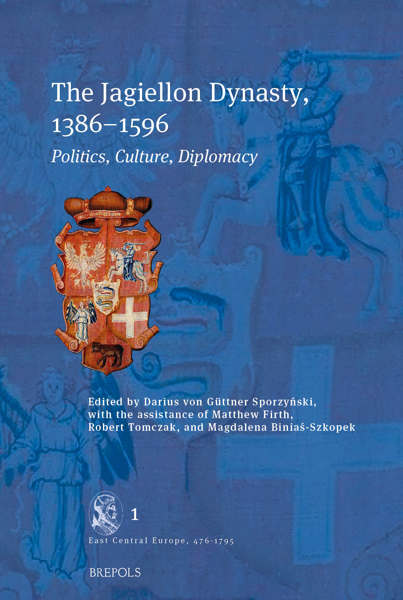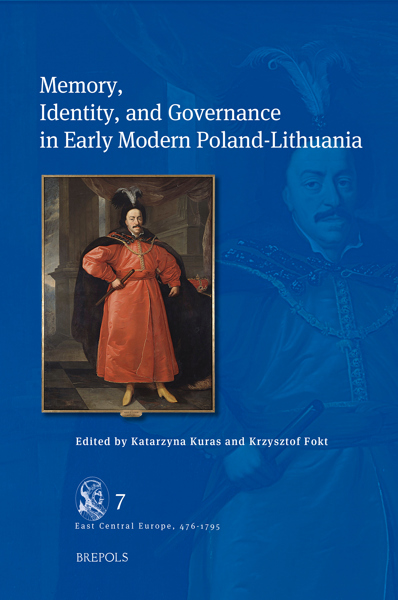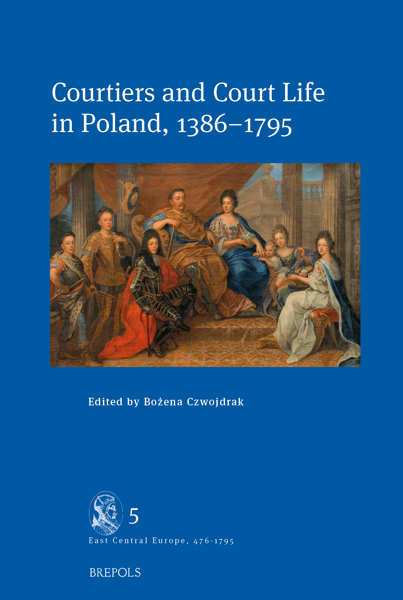
- Pages: 404 p.
- Size:156 x 234 mm
- Illustrations:8 b/w, 96 col.
- Language(s):English
- Publication Year:2024
- € 115,00 EXCL. VAT RETAIL PRICE
- ISBN: 978-2-503-60577-7
- Hardback
- Available
- € 115,00 EXCL. VAT RETAIL PRICE
- ISBN: 978-2-503-60579-1
- E-book
- Available
This volume unravels the rich collections of the Jagiellon and Vasa dynasties, where jewellery symbolised power, piety, and politics, showcasing an era where even elk hooves and eagle stones became treasures, embodying cultural beliefs and elite prestige.
"The history of art from eastern Europe is also often pushed to the margins of study, overshadowed by the field’s focus on Germany, France, and Italy. Yet, as recent scholarship has increasingly demonstrated, eastern and central Europe are vital to understanding the function of art works in the Middle Ages and early modern period. The author contributes to this significant effort. Ana Kijak has admirably translated the text into English, making this study accessible to a broader swath of audiences. (...) As a whole, this book reminds readers to see jewels not only as luxury adornments and markers of wealth but as important tools of political and social relationships." (Elizabeth Rice Mattison, in The Medieval Review, September 2025)
"Royal Jewels of Poland and Lithuania is a landmark study that brings overdue attention to a region and material culture often excluded from canonical narratives of European court art. It will be indispensable not only to scholars of jewellery and regalia but also to historians of gender, diplomacy, and visual sovereignty in early modern Europe." (Annemarie Jordan Gschwend, in Jewellery History Today, 54, 2025, p. 13)
Professor Ewa Letkiewicz is an art historian working at the Department of Art History, Faculty of Arts, University of Marie Curie-Skłodowska, Lublin. Her research concentrates on jewellery and jewellery collections, their history as well as the antiquarian trade and other ways of acquiring jewellery. She has published widely on techniques of jewellery making and on the creators and designers of jewellery. She is the author of three monographs and over a hundred articles, and also edited and co-edited the series “Body, dress, jewellery” (Lublin, 2019) which examined cultural, social and political contexts of bodies, dresses and jewellery.
This volume delves into the rich histories of the Jagiellon and Vasa dynasties, shedding light on the profound interplay between jewellery and socio-political forces. Readers are invited into an era where jewellery bore multifaceted significance, from symbolising power and piety to facilitating economic engagements. The royal perception of value extended beyond traditional treasures, with a keen interest in animal-derived artefacts. These unconventional items, such as elk hooves or eagle stones, were highly esteemed, reflecting both luxury’s diverse nature and the era’s cultural and mystical beliefs. Rather than merely cataloguing these artefacts, this study animates them, intertwining narratives of monarchs, nobles, craftsmen, and the lands from which these treasures emerged. It delves into a world where a gem’s glint signifies might, gold hints at empires’ expanse, and a narwhal’s horn could determine kingdoms’ destinies. Jewellery has long held a central position in history, particularly among the elite. These pieces were not simply decorative; they conveyed prestige, societal position, and authority. They symbolised both worldly and spiritual prominence, enriched with a complex symbolism. Beyond showcasing wealth, jewellery played crucial roles in diplomacy and politics. What meanings did these unique gems carry for their initial owners? This book uncovers the tales, magnetism, and mystery surrounding these jewellery collections. It paints a picture where jewellery transcends mere ornamentation, serving as a powerful testament to influence, devotion, and grandeur.
Introduction
Chapter 1
In the Service of the Ruler and the Dynasty
Chapter 2
The Splendour of Jewels: Ornaments for the Body and for Attire
Chapter 3
Leges sumptuariae — Laws against Excessive Luxury
Chapter 4
Apotropaic and Medicinal Functions Attributed to Jewels
Chapter 5
Jewels at the Jagiellon Court
Chapter 6
Jewels at the Court of the Vasa Monarchs
Conclusion
Bibliography
Index





